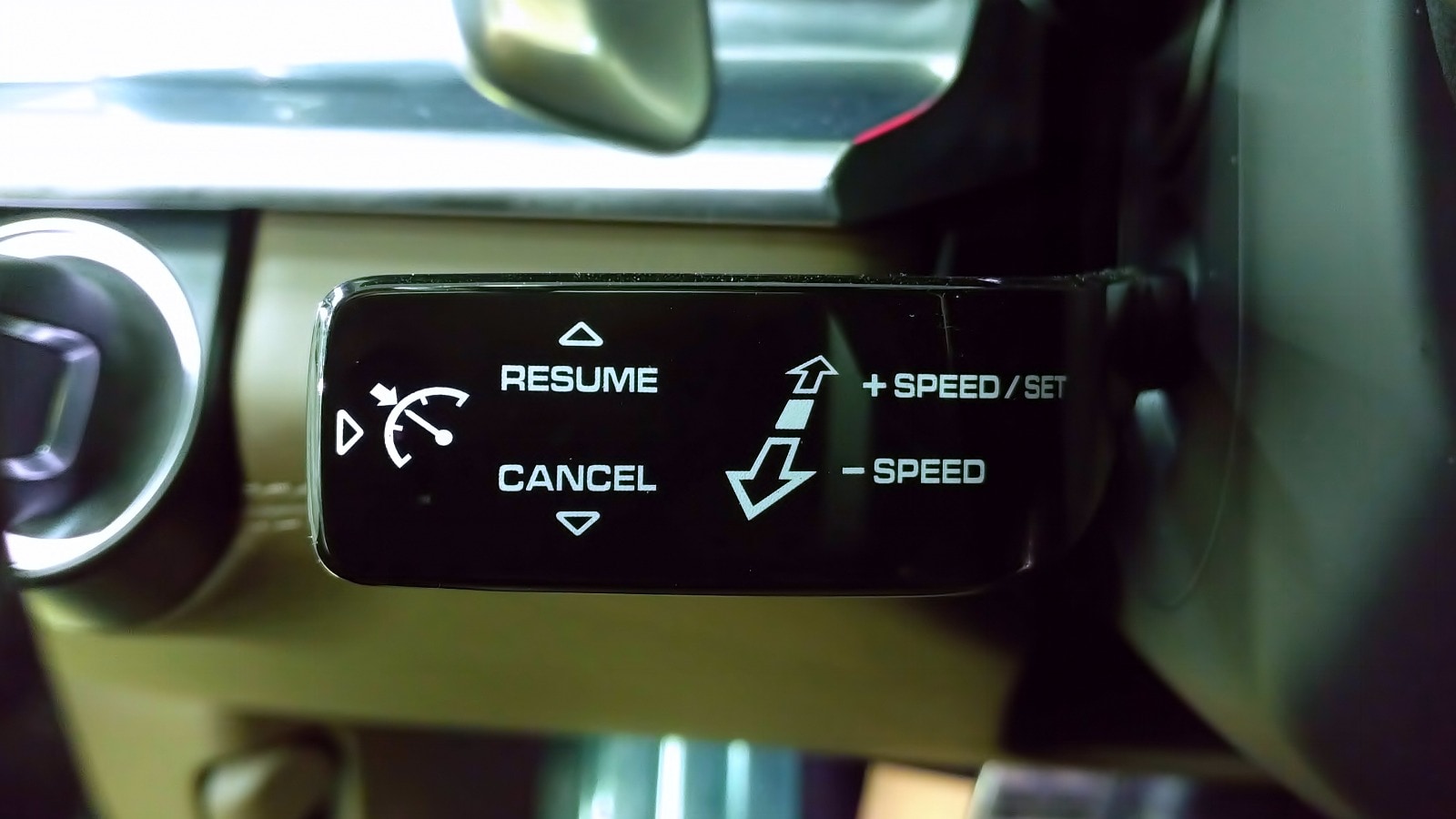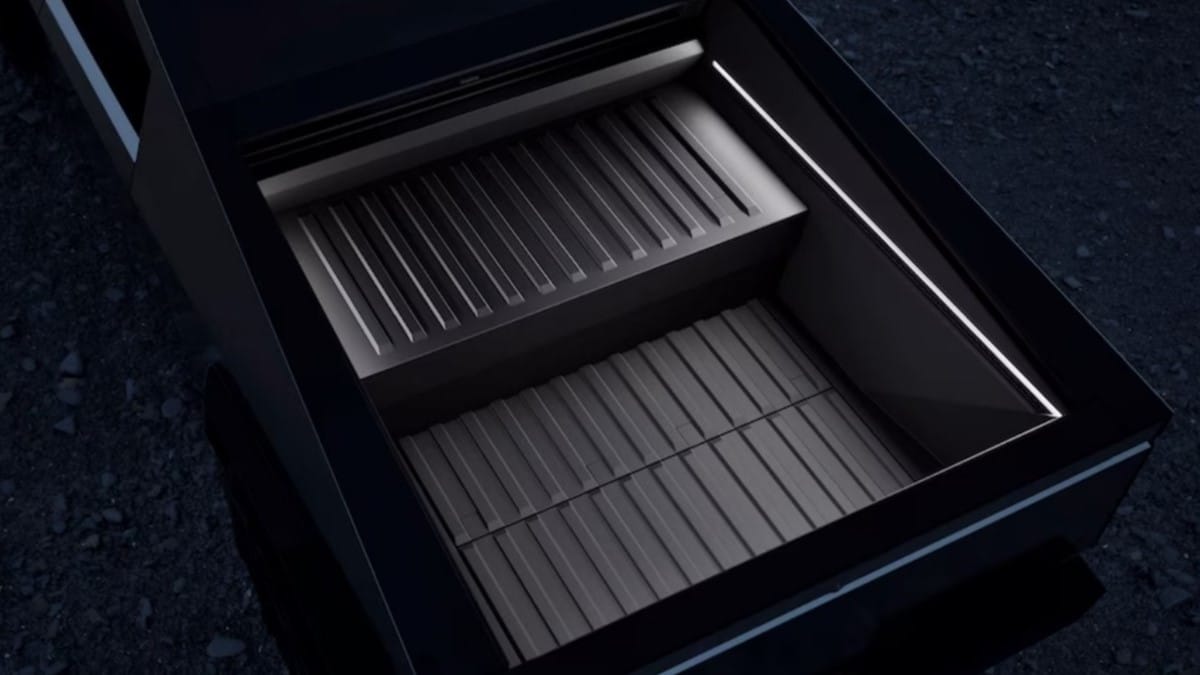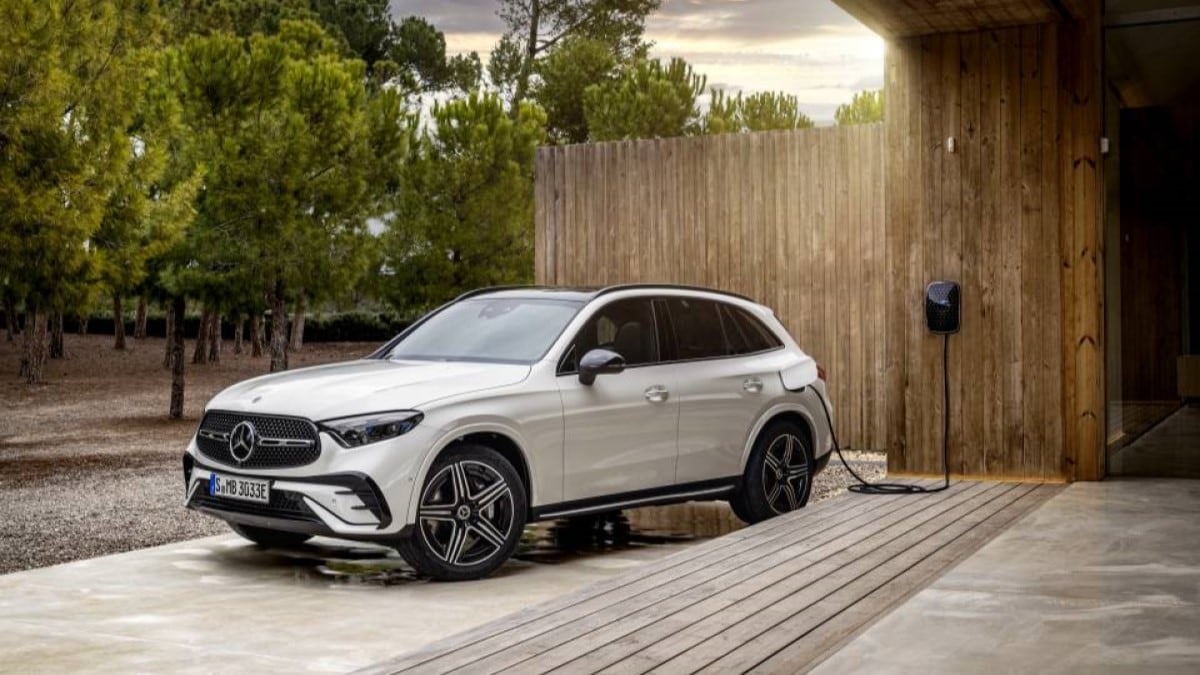Quick Facts About Cruise Control
In the past 25 years, huge leaps in sophistication propelled cruise control to a point where some drivers may be confused by exactly what it is and how it works. Not to fear. Here, we will clear up any confusion about its functions, benefits, and limitations to help you on your car buying journey. Want to skip ahead in the story? Use the jump links below.
What Is Cruise Control?
Cruise control is a feature allowing the driver to set a predetermined speed, which the system’s computer maintains until the driver adjusts the speed, taps the brake, or disengages the system. In other words, once set, the cruise control system automatically controls vehicle speed, relieving the driver of that responsibility.
How Does Cruise Control Work?
Conventional cruise control uses its computer to maintain a speed determined and manually set by the driver with no awareness of or regard for surrounding traffic and conditions. Capable of responding to topographical changes, like going up and down hills, the computer increases throttle pressure or engages the engine brake to maintain the preset speed.
How To Operate Cruise Control
Although individual carmakers may provide differing controls, the fundamentals of a basic cruise control system remain the same. That is, the driver manually sets and then can adjust the desired speed, while the cruise control system automatically responds to the driver’s input via steering-wheel-mounted controls.
How To Set Cruise Control
Typically, you can operate the functions of the cruise control system on today’s new cars using buttons located on the steering wheel. They are usually placed for easy operation by one of the driver’s thumbs. This wasn’t always the case. For example, until recently, Mercedes-Benz put the operational controls for its cruise system on a separate stalk below the turn-signal stalk on the left-hand side of the steering column.
Using Cruise Control Buttons
The steering-wheel controls for some systems have buttons or toggles with labels like “Accel” and “Decel,” while others simply use up-and-down arrows to signify a button’s function. We recommend consulting your car’s owner’s manual to decode the cruise control buttons and their operation for your specific vehicle. Here’s a list of the driver-operated functions provided by the cruise control buttons and toggles. Some controls perform multiple functions, depending on how they are used. For example, the Set and Accelerate functions are often incorporated into the same button or toggle.
- On — Usually identified by a representation of a speedometer, the on button turns on the system. For some vehicles, pressing the on button automatically sets the cruise system’s speed to whatever speed the vehicle is traveling when turned on.
- Off — Some cruise systems provide a control for turning off the system. Often this button is identified by the speedometer symbol with an “X” through it.
- Set — Once the system is engaged, the driver can set or reset the speed the system will maintain by manually adjusting the car’s speed and then pressing the set button.
- Accelerate — Usually, a quick tap of this control will increase the set speed by 1 mph (on some models the bump in speed is 5 mph), while holding the button down will smoothly accelerate the vehicle to the desired speed.
- Decelerate — Tapping this control will lower the set speed by 1 or 5 mph, while holding the button down will smoothly slow the car.
- Resume — When the driver engages the brake pedal, the system automatically suspends its control; however, its computer retains the preset speed. Using the resume button, the driver can return the speed control to the cruise system at the previous preset level.
What Are the Benefits of Cruise Control?
- Conserve fuel — According to the carmaker Kia, when engaged, cruise control will save an average of 7%-14% on gasoline because cruise control eliminates fuel wasted by fluctuations in speed.
- Reduce driver fatigue — Assuming some of the driver’s burden on longer trips, cruise control allows the driver to relax a bit.
- Conform to speed limits — Because drivers can set the speed to that of the speed limit, cruise control can reduce a lead-footed driver’s exposure to speeding infractions.
How Does Cruise Control Work With Adaptive Cruise Control?
Adaptive cruise control improves upon conventional cruise systems by not only maintaining a preset speed, but also by automatically keeping a safe distance between your car and the vehicle in front of it. Using forward-pointed sensors, cameras, or both, adaptive cruise control maintains your preset speed while constantly monitoring the vehicle in front of you. However, the kicker is, it automatically slows and accelerates to maintain a predetermined following distance. More sophisticated adaptive cruise control systems can bring your car to a full stop If necessary. Even more advanced systems will automatically get your vehicle moving again once the car ahead travels forward, though sometimes with the tap of the gas pedal. Read more on Traffic Jam Assist below.
Additionally, adaptive cruise control provides a button to establish the minimum distance it will accept before responding to the slowing or stopped car in front of it. Usually, the factory offers three or four choices from which you can pick. A graphic on the driver information screen displays a representation of the changing minimum distances as you use the button to scroll through them.
What Is Traffic Jam Assist?
Traffic Jam Assist is a function of highly advanced adaptive cruise control systems engineered for slower-moving, stop-and-go traffic. At slower speeds, say, 40 mph and lower, Traffic Jam Assist calculates the following distance based on the stop-and-go traffic conditions: Stopping when the vehicle ahead stops and going again when traffic begins moving. Many such systems also provide lane-centering technology, helping the driver steer the vehicle to keep it in the middle of the lane.
Is Cruise Control Safe?
Yes, cruise control is safe. However, it’s a tool designed to make the driver’s task easier and less stressful. On the other hand, neither conventional nor adaptive cruise control relieves the driver of the ultimate responsibility of safely driving the car. It’s up to the driver to maintain control over the car’s operation. When used appropriately, conventional and adaptive cruise control are safe.





